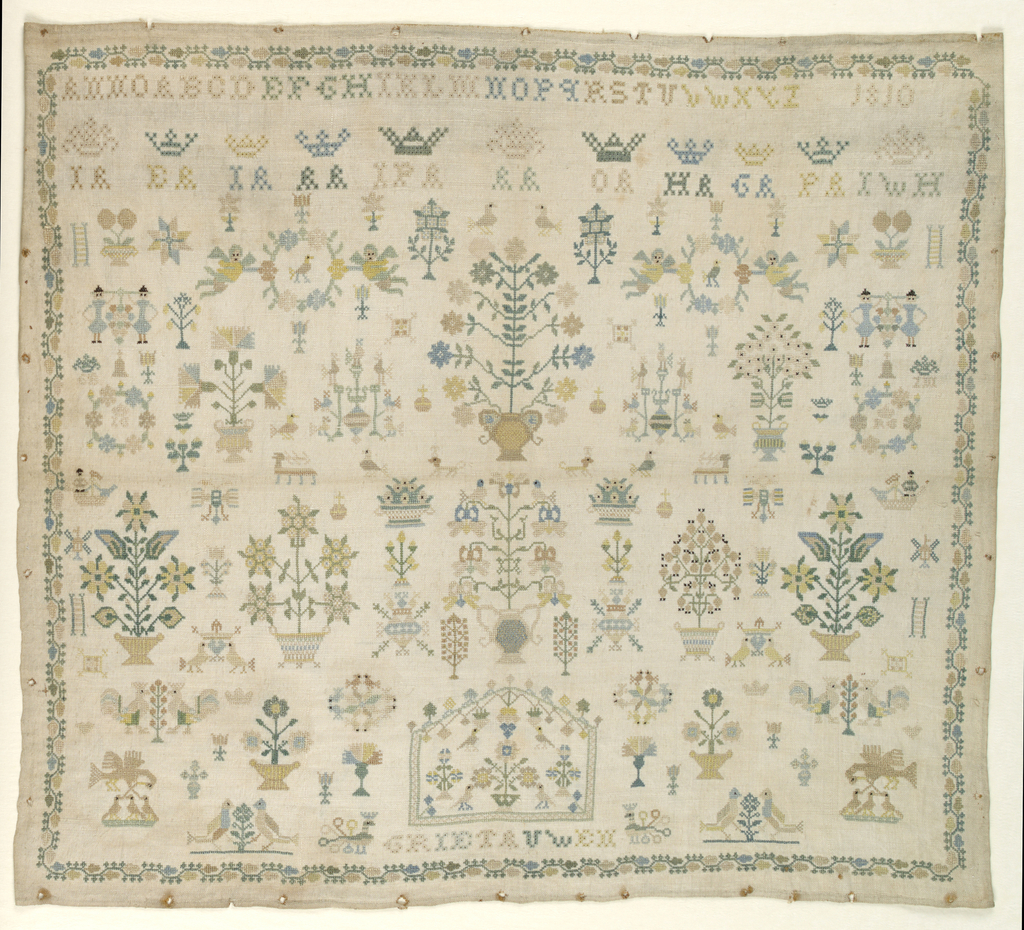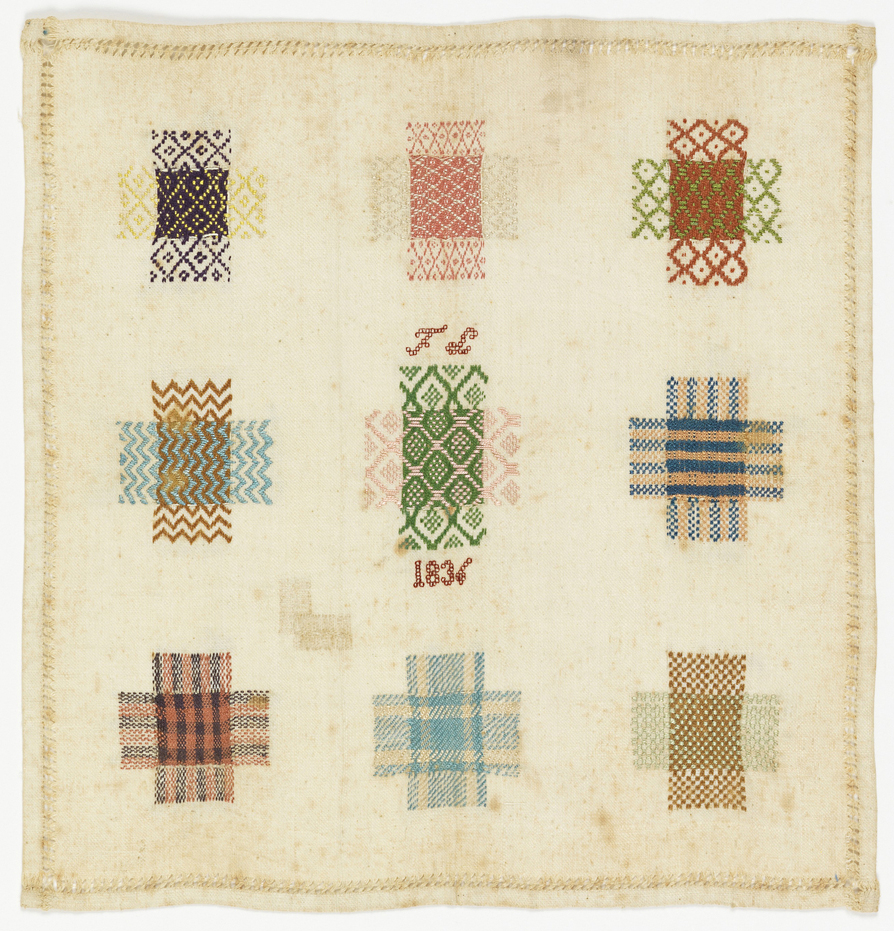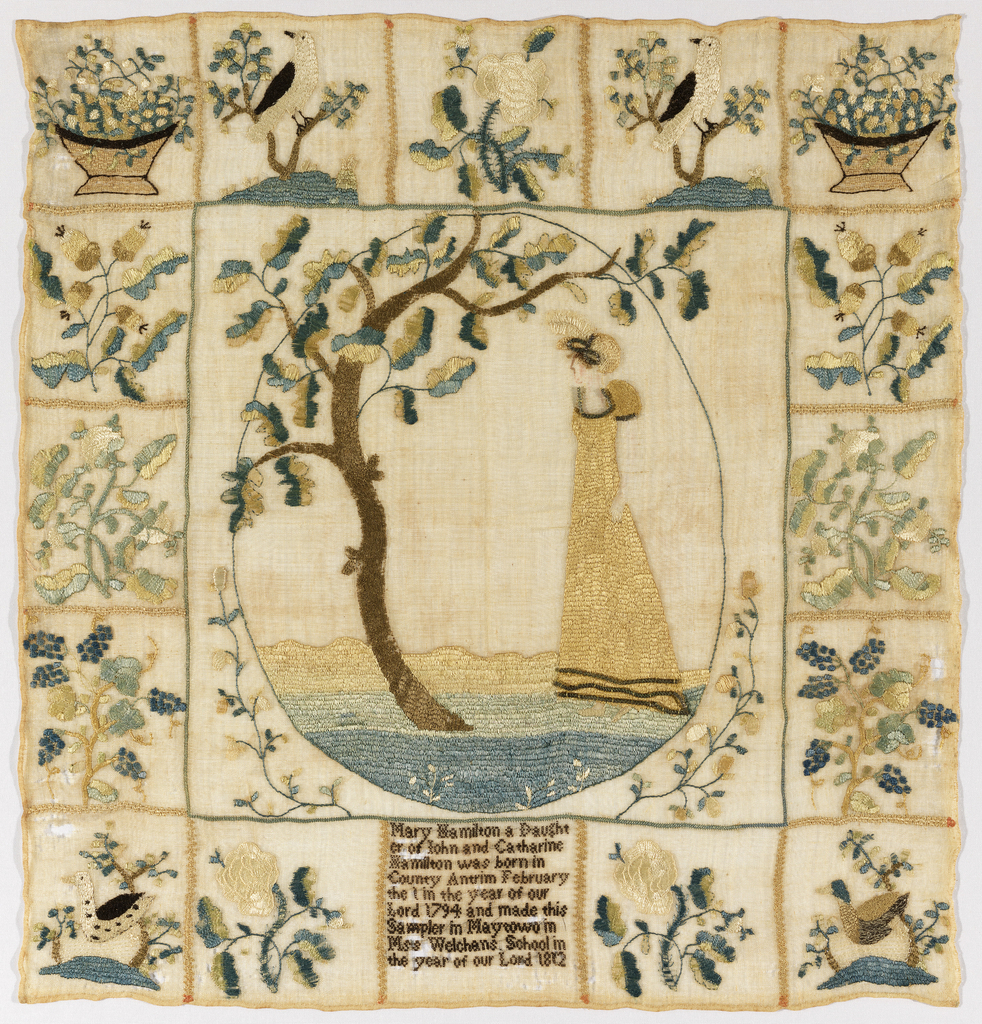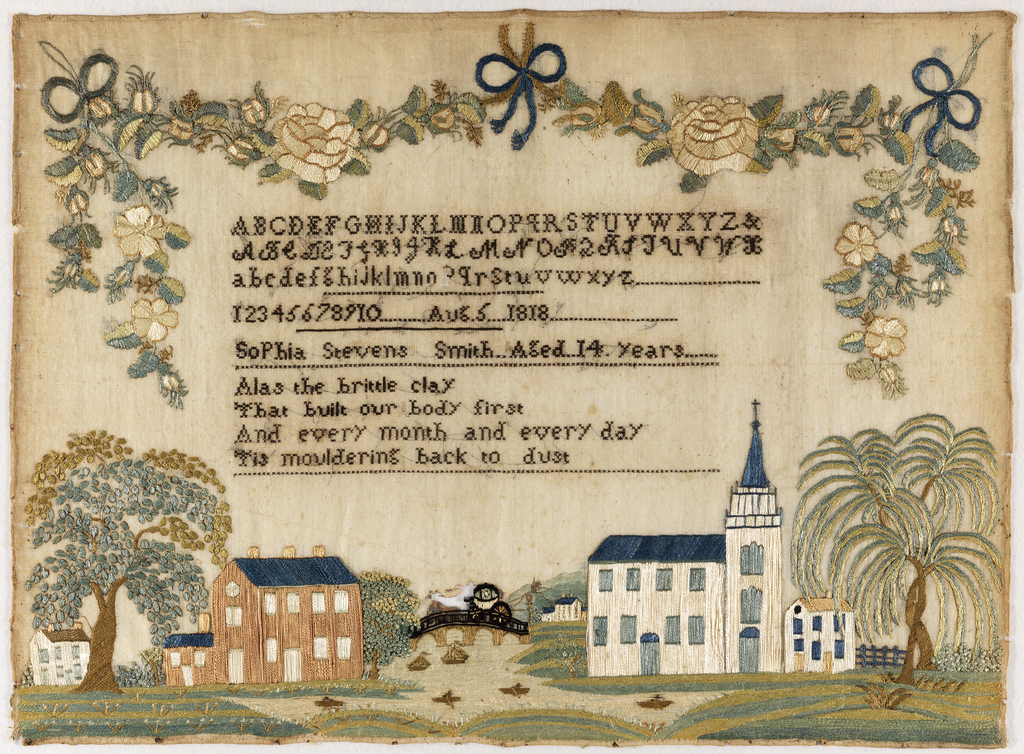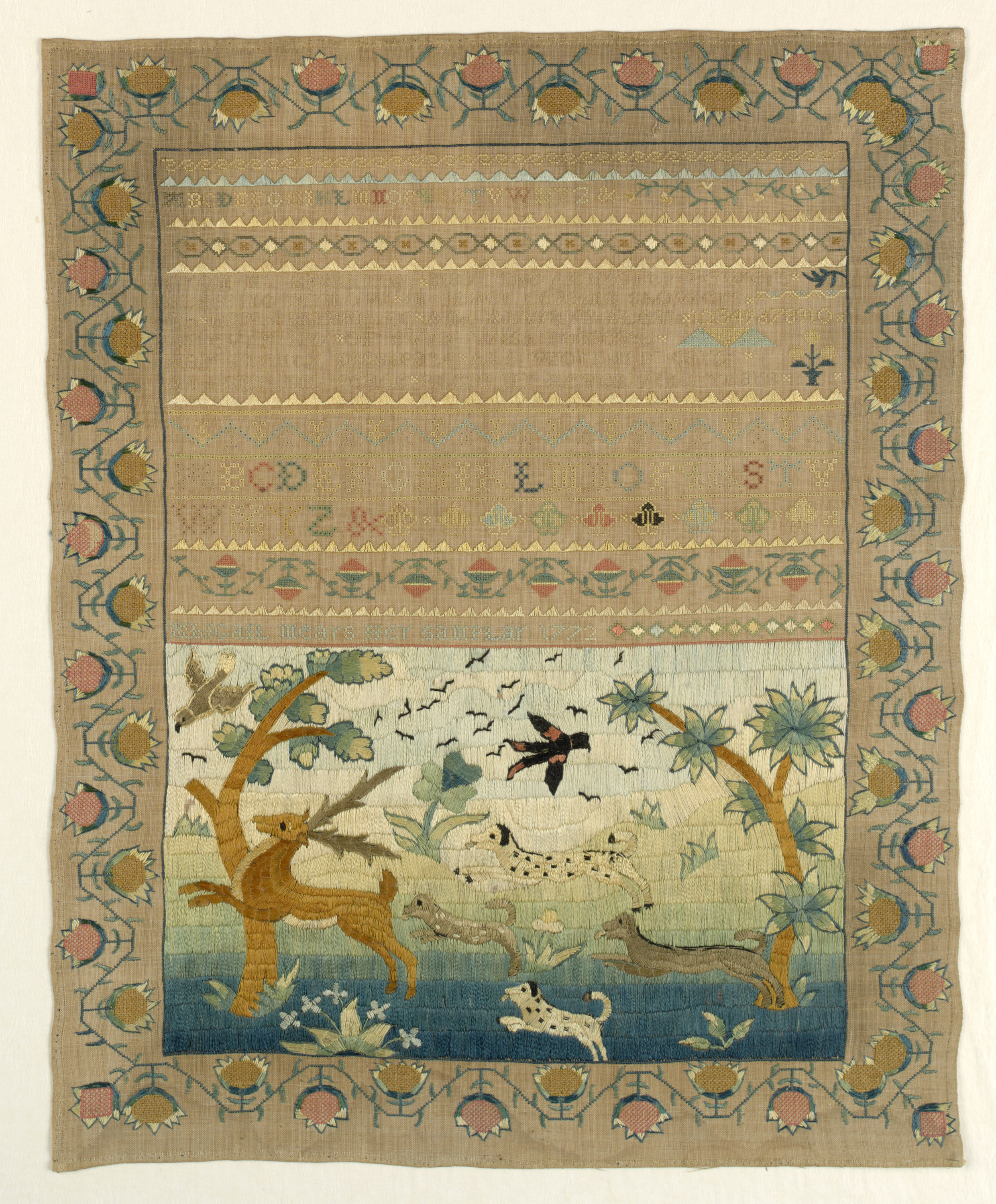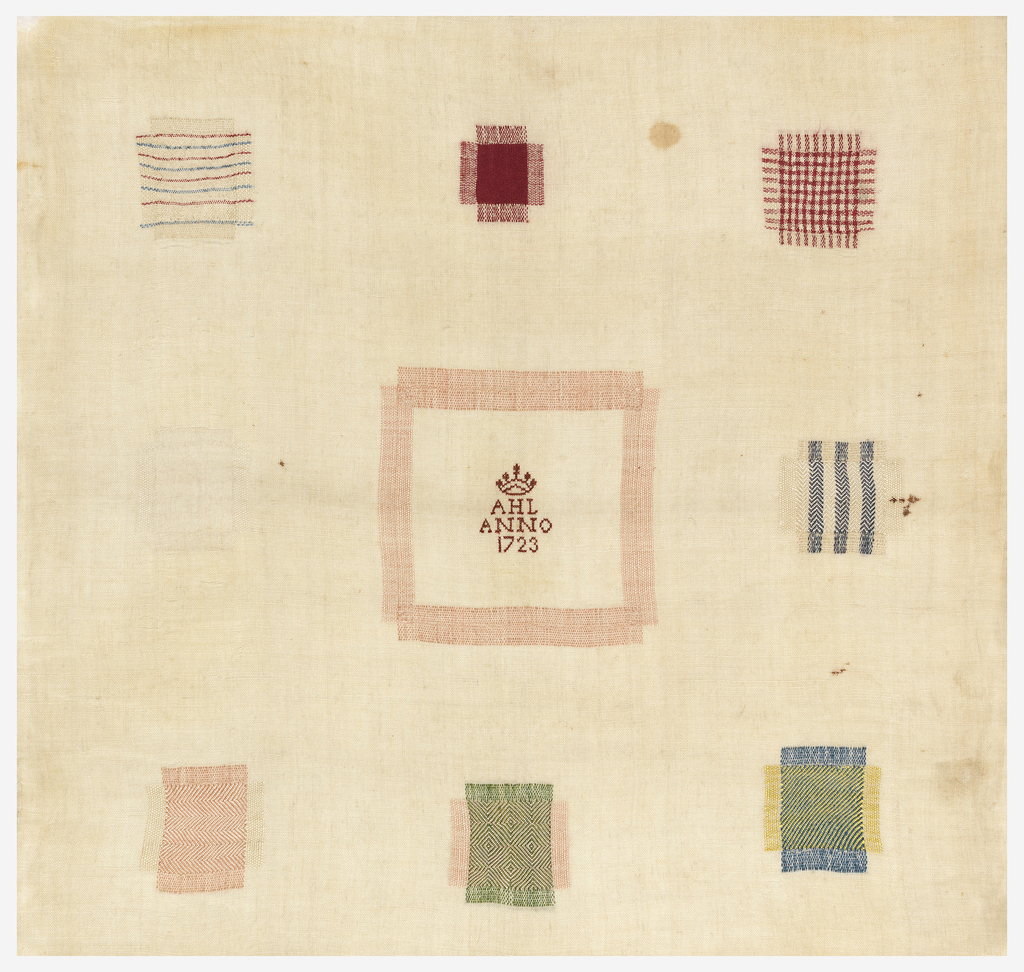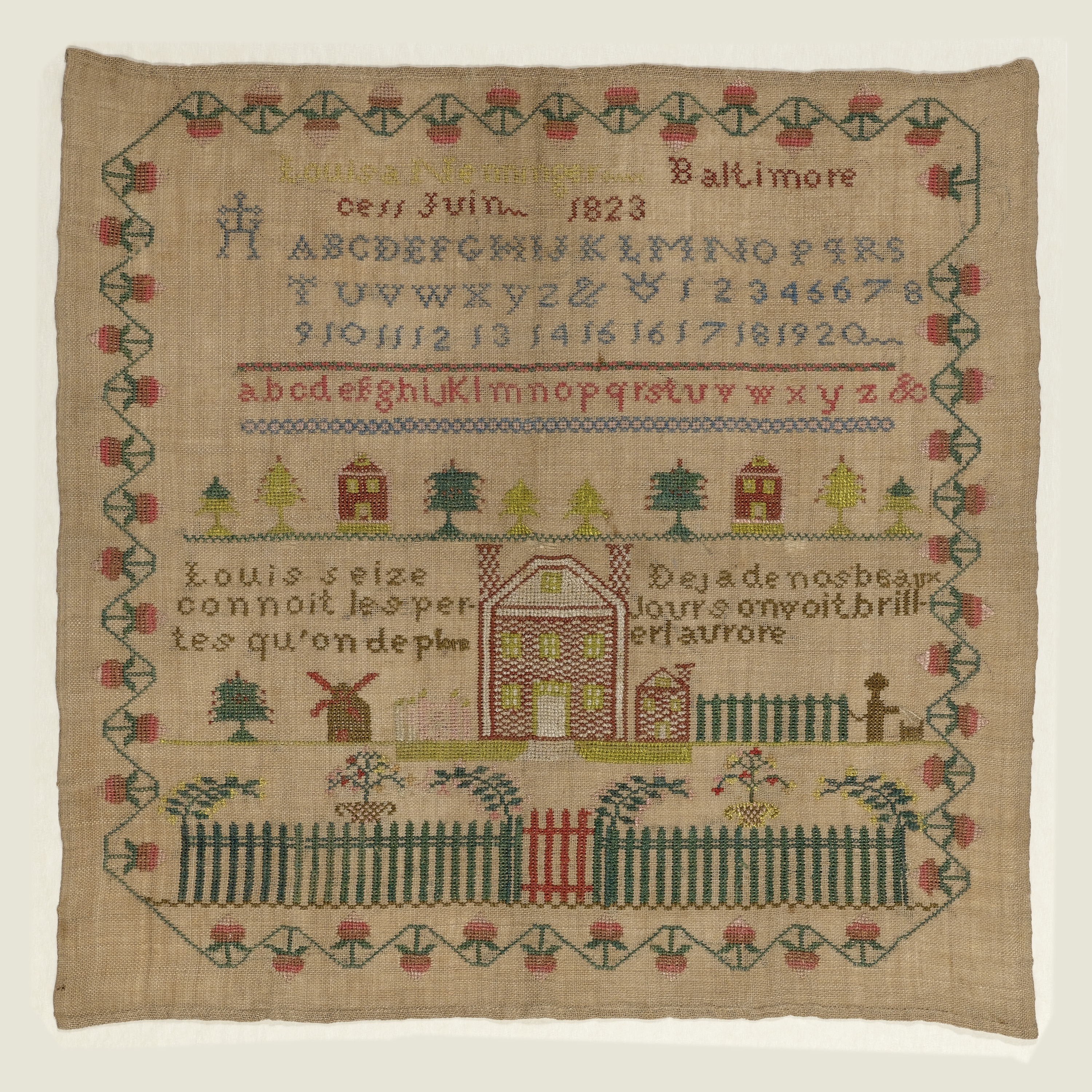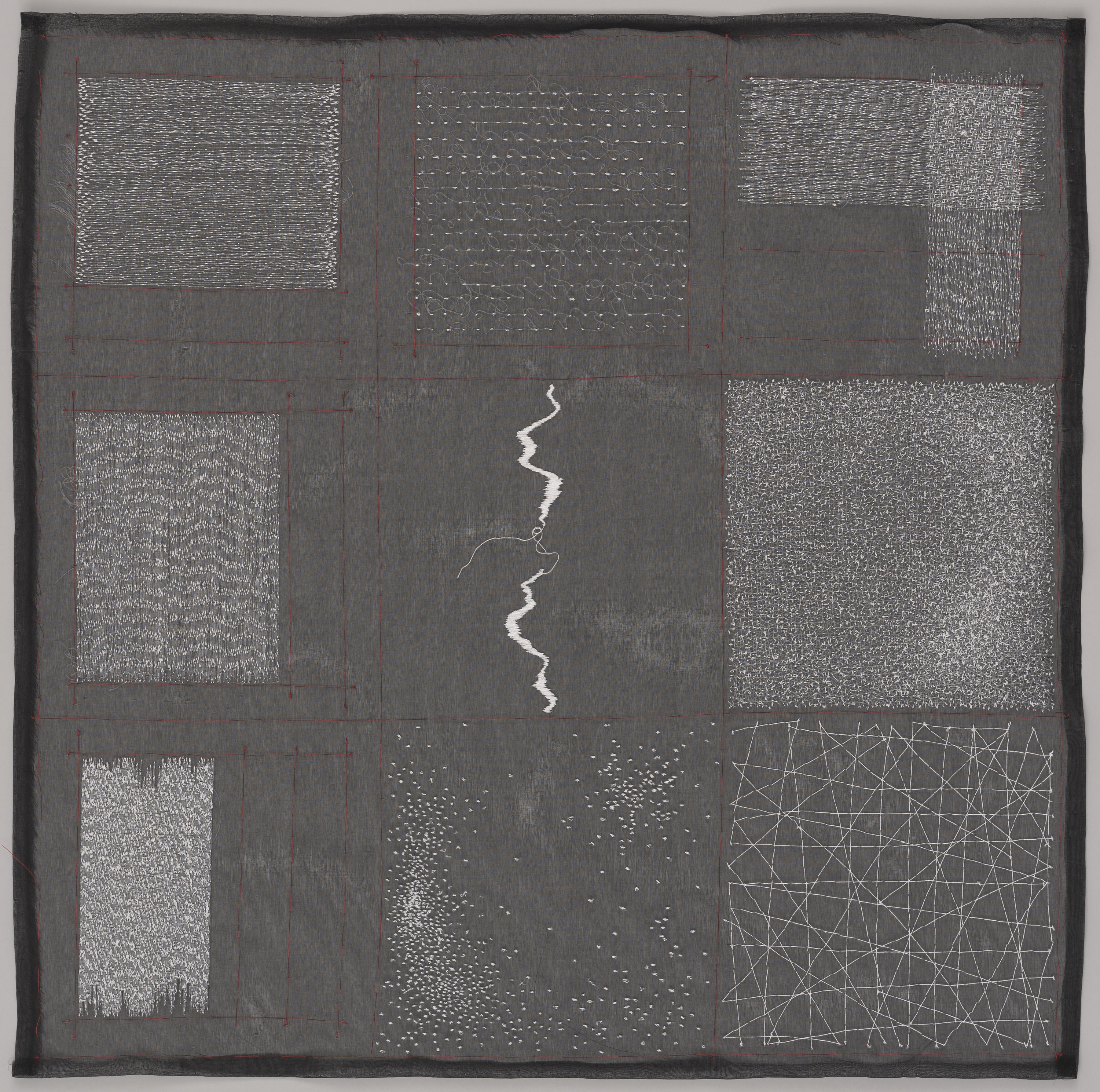Griet Ruwen’s sampler shows how deeply ingrained faith and religion were in daily Dutch culture in the early 19th century. Even as she practiced her needlework, Griet expressed piety and religious devotion through symbolism. Below the crowns and initials are two angels holding a wreath of roses, which represents eternity. The wreath encircles a dove,...
Environmental and ethical reasons to extend the life of old clothing.
This sampler was worked in 1812 by Mary Hamilton at the Maytown, Pennsylvania, school of Catherine Welshans (who became Catherine Welshans Buchanan after her 1813 marriage). The central scene depicts a woman, fashionably attired in a feathered headdress, standing beneath a tree. The border is made up of compartmentalized motifs, including baskets of flowers, flowering...
Sophia Smith’s sampler is part of a distinctive group of Wethersfield, Connecticut, samplers made at two different schools during the first quarter of the nineteenth century. Earlier examples were probably worked at the Abigail Goodrich School, which operated from around 1804 to 1815. Sophia’s is one of a later group of samplers, most likely made...
This sampler, worked by Abigail Mears in 1772, is related to a group of embroideries known as the “fishing lady pictures.” The name originally referred to Boston needlework featuring the same fishing lady, but now encompasses a variety of related pastoral compositions, with or without the fishing lady. From the 1760s, the same types of...
French-speaking Catholics, fleeing the bloody revolutions in France and the Caribbean, settled in large numbers in the Baltimore area. In 1791, priests from the Parisian Society of Saint Suplice established a seminary in west Baltimore conducting religious services in French, and it soon became the center of a rapidly-growing French community. Among the émigrés, both...
The unstructured nature of this family register sampler, initialed “SS” and attributed to Sally Sacket (b. 1786), is typical of eighteenth-century examples. In contrast to the more organized genealogy samplers that appear after 1800, the text here is run together in continuous lines. Sally’s sampler is one of a group of three Westfield, Massachusetts, examples...
Heidrun Schimmel says that she has always been interested in the connection between fiber/fabric/textile and the human being, especially between the thread and the human. Perhaps a metaphor for human existence, stitching with thread tracks time, especially when employing the same type of stitch on the same type of cloth as Schimmel has been doing...
